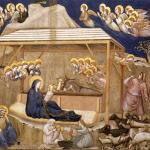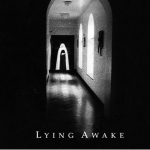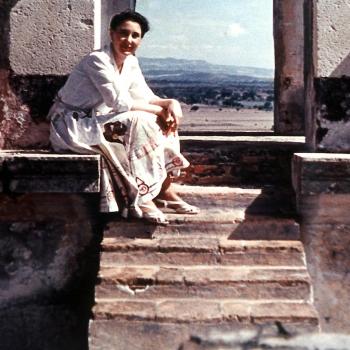What is the relationship between pathology and holiness? In recent years, scientific studies have sought to draw a link between psychopathologies — such as epilepsy and schizophrenia — and mysticism. And when science finds a mechanism, it seems to shatter an illusion of mystery. Does this relationship dissolve religious experience into disinhibited temporal lobes? Could altered brain states explain away the long and rich tradition of Christian mysticism?
These are questions we must raise and explore; science alone will not answer them. And on this journey, Ron Hansen’s novel Mariette in Ecstasy is an invaluable provocation.
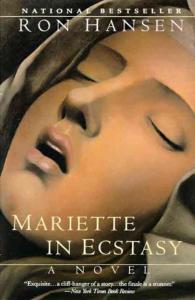
The plot of Mariette in Ecstasy
The novel is set in 1906, when seventeen-year-old Mariette Baptiste is about to enter the cloister of the Sisters of the Crucifixion. Their convent, located in upstate New York, is set apart from the rest of the world – both by physical barriers of walls and grilles, and by the evangelical counsels of poverty, chastity, and obedience. Upon her entrance, Mariette’s sister Mother Céline – the prioress of the convent – describes their life thus:
We seem to mystify people who are slaves to their pleasures. We often work too hard and rest too little, our food is plain, our days are without variety, we have no possessions nor much privacy, we live uncomfortably with our vows of chastity and obedience: but God is present here and that makes this our heaven on earth.
Quickly, the reader discovers that this community is in the midst of a mysterious and disturbing series of events, all centered around Mariette. Through terse dialogue and lush descriptions, Hansen slowly reveals the secret: the young postulant seems to be experiencing the stigmata. Is it affected or real? Is it a delusion, a plot, or a gift of God?
Hansen does not offer easy solutions to this mystery. Some sisters adore her or laud her as a living saint, venerating and even licking her wounds. Others denounce her a demonic, and hate the attention her afflictions garner. Mariette undergoes strict institutional and social scrutiny that further crucifies her. At one point, Mariette’s wounds are examined by her father, a well-known doctor who represents the voice of science in the novel. Severe and judgmental, he condemns her as a fraud, a condemnation from which Mariette does not recover.
Theological and existential questioning in Mariette
Why would Mariette receive the stigmata? Hansen seems to show that she embraced the mystery of embodiment. From the age of thirteen, Mariette has prayed to experience Christ’s passion, and longs to receive the ecstasy of knowing Him. Before she leaves her father’s house for the Sisters of the Crucifixion, Mariette stands before the mirror, lets her nightgown fall to the floor, and tells her Lord, Even this I give you. Mariette’s faith is lived sensually, not merely intellectually or morally. She has offered her body to God, and He has made it into a canvas for His wounds.
“Blood scribbles down her wrists and ankles and scrawls like red handwriting on the floor.”
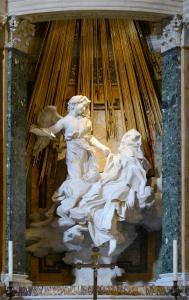
But what does it mean for her to live His suffering? Mariette’s experience is at once spiritual and physical. Though the wounds are embodied by Mariette, they are not hers. The mystery of her Bridegroom’s gift to her – the stigmata – cannot be reduced, but grows with knowledge of it.
So what?
Hansen does not separate spirit from matter, nor mystery from experience. The novel is one of phenomenal Catholic storytelling, expertly weaving together the sacred and the erotic, the pious and secular. It embraces paradox and welcomes messiness, thereby revealing the strange beauty of human experience. The nuns, though they welcome the austerity of religious vows, nevertheless live in a natural world of captivating sensuality. Throughout the novel, Hansen poetically describes this setting of the convent in rhythmic phrases that capture its rich beauty.
Perhaps most interestingly, Hansen writes a character who delicately walks the line between holiness and disordered pathology. It is not clear if Mariette is a saint or insane. Textual evidence seems to support both – and neither – conclusion. Perhaps Hansen intentionally leaves the question unresolved, as a proposal that the answer might lie somewhere in between the starkly-drawn categories we desire.
So what is the relationship between pathology and holiness, psychological states and mysticism?
Check back on Sunday for the next post in this series.
Further reading recommendations
Hansen’s story is gorgeous yet some how grotesque; it reminds me of Flannery O’Connor’s writing, and Graham Greene’s The Power and the Glory.

